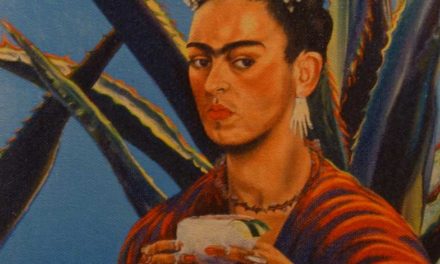Cover art courtesy of Ruiz Healy Art, San Antonio, Texas. © Estate of Chuck Ramirez.
Cover Art Title: Turquoise, 2000, Photograph pigment ink print, 46 x 34 in, Edition of 6 from the Chuck Ramirez, Quarantine Series
Bio By Victor Zamudio Taylor
An excerpt from Políticas de la diferencia: Arte Iberoamericano fin de siglo, Consortium of Museums of the Valencian Community, 2001.
Chuck Ramirez deals with the confluence of personal and social experiences through use of the grid and seriality. As an artist informed by the “objectness” of the image and issues germane to simulation, much of Ramirez’ work employs an icon that is repeated and arranged serially. Like other native Tejano artists—Texans of Mexican-American origins—such as fellow San Antonio artists Jesse Amado and Franco Mondini-Ruiz, Ramirez’ work may be inscribed in the tradition that Donald Judd forged when he moved to Marfa. Combining the lexicon of Minimalism with images drawn from Tejano and queer vernacular cultures, works such as Quarantine address key issues of contemporary experience.
Revisiting the Dutch vanitas genre, Ramirez arranges a series of images of floral displays in a grid. These large-scale digital prints of hospital floral arrangements reference the pain and grief of loss associated with terminal illness. Also recalling the works of Bernd and Hilla Becher, the depicted typology is objectified, purged of context by editing out narrative cues and background settings. Depleted and stark, the flowers convey, through seriality and metaphor, aspects of human experience as lived history. In contrast to artistic traditions in which everyday images are simply drawn from mass culture (from Warhol to Koons), Ramirez charges the simple, humble and banal with vital layers of signification
Chuck Ramirez, San Antonio, Texas, (1962-2010)
Chuck Ramirez was an artist who lived and worked in San Antonio, Texas. As an artist and graphic designer, Ramirez processes and deconstructs the media world in which he lives. His work employs visual and conceptual techniques found in contemporary advertising and package design. Using typography and digital imaging technology, Ramirez isolates and recontextualizes familiar objects and texts to explore the human condition. Always personally relevant, Ramirez explored cultural identity, mortality, and consumerism through his photographs and installations. The images in his 1997 series, Coconut, slyly subverted stereotypes of those who cross cultural boundaries. Ramirez resurrects waste—photographing filled garbage bags, dying flowers, and battered, empty piñatas—reflecting on the fleeting nature of human existence while imposing the will to survive.
One of San Antonio’s most beloved artists, Ramirez was a major force in the San Antonio art community before his untimely death in a 2010 cycling accident. A 2002 Artpace resident, Ramirez’ work has been exhibited nationally and internationally. In 2012, The Smithsonian American Art Museum purchased Ramirez’ limited edition large-format photograph, Seven Days: Breakfast Tacos, for the institution’s permanent collection. The work is included in the traveling exhibition Our America: The Latino Presence in American Art. During the winter of 2017, the McNay Art Museum exhibited the first significant survey of his work in the exhibition Chuck Ramirez: All This and Heaven Too. The exhibition was organized by the McNay’s Chief Curator/Curator of Contemporary Art René Paul Barilleaux.
Ruiz-Healy Art is the exclusive representative for the estate of Chuck Ramirez. Contact us for the availability of prints. Some editions are closed or sold out.









